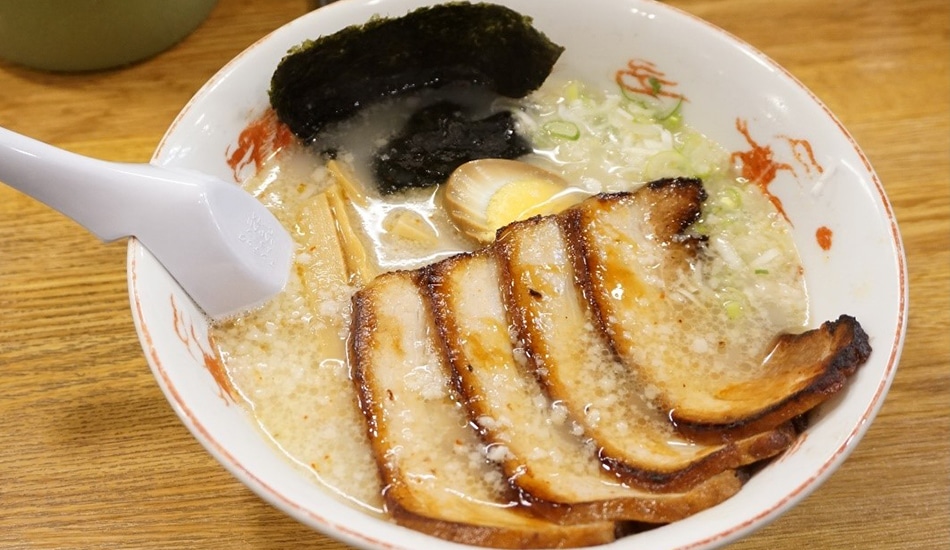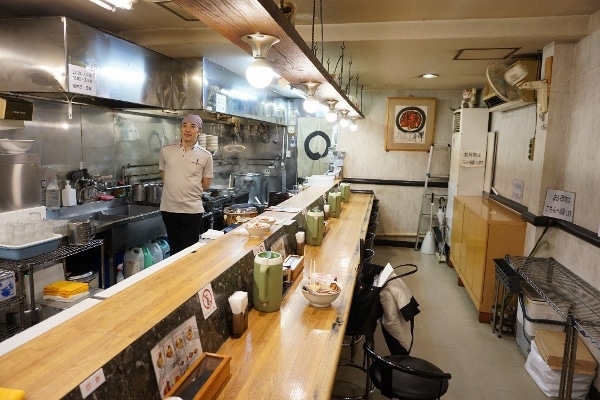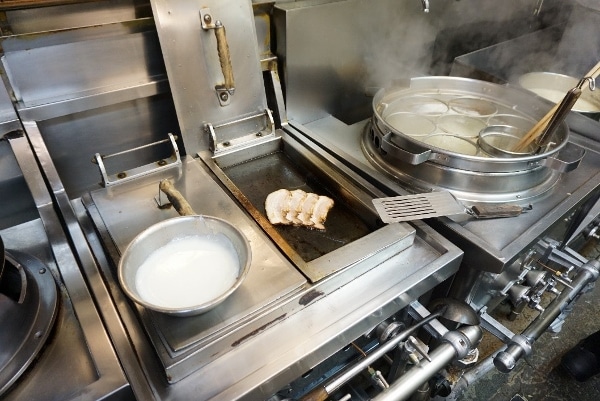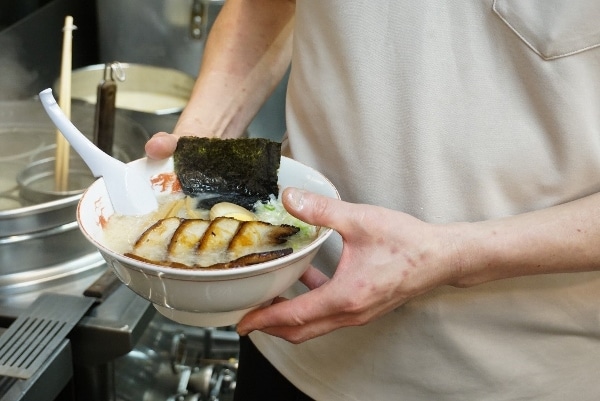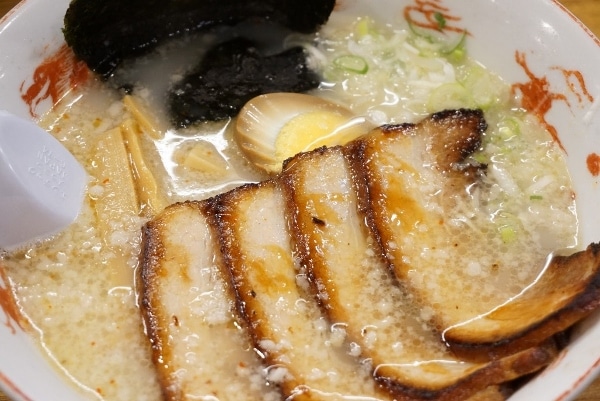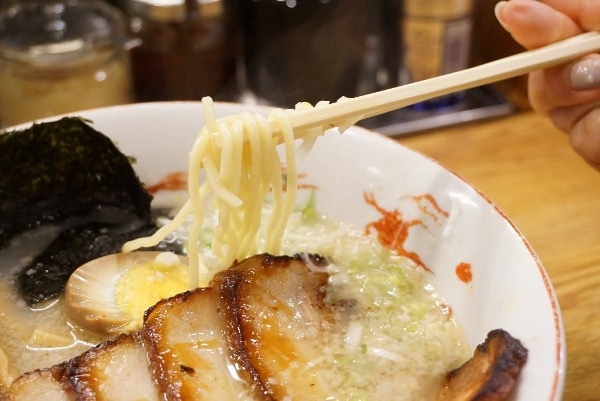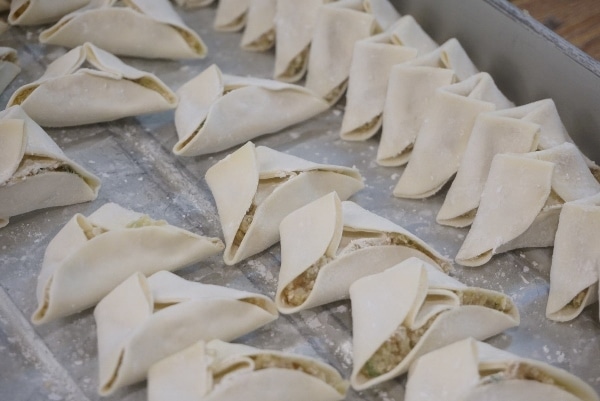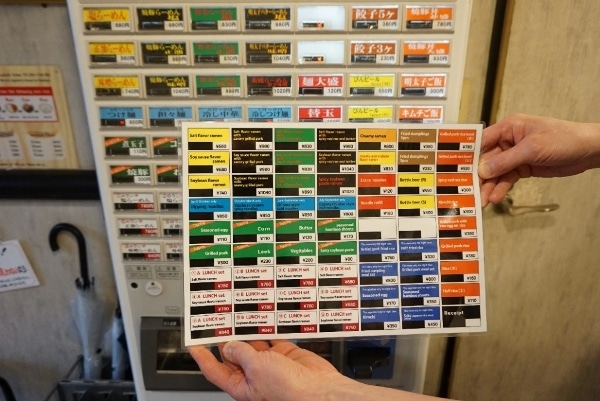Eye-catching Yakibuta Ramen in Kiyosumi-shirakawa
Published: January 6, 2020
Ramen (the ubiquitous firm-textured noodles, made from wheat flour, salt, water, and kansui – a type of alkaline water), must be Japan’s most popular dish, and wherever you go in Tokyo the ramen restaurants always seem to be busy. A stone’s throw from the beautiful Kiyosumi Teien Garden and close by Kiyosumi-shirakawa Station is Tonko Ramen.
Run by Mr. Nobuhisa Ito, a friendly, young-looking 52-year old, this restaurant caters not only for Japanese customers, but also foreign diners for whom a lot of thought has gone into serving up guidance in English to help navigate the intricacies of the ramen menu. I could see this the moment I stopped outside the front of Tonko Ramen and my eye was caught by the large advertisement in Japanese and English in the window.
Mr. Ito told me that this had recently been installed, and he had immediately seen an increase in customers, which he put down to the power of advertising. The restaurant’s interior, in keeping with most ramen shops, is minimalist – people go for the taste not the decor.
Tonko Ramen’s repertoire comprises variations on the theme of ramen, with the English menu listing plain, savory grilled pork, vegetable, spicy cod roe and butter, and spicy soybean paste ramen. Each has a choice of 3 flavours: salt (“shio”), soy sauce (“shoyu”) or soybean (“miso”), all made to Mr. Ito’s own recipes.
Tonko Ramen’s clientele comprises office workers, labourers and locals, and even the odd sumo wrestler from one of the stables in the area, as well as foreign residents and tourists, and his vegetable ramen, with its healthy ingredients of bitter gourd, cabbage, carrot, bean shoot, lotus and burdock, has apparently gained a following among female diners, including mothers with babies.
Mr. Ito showed how he prepares one of his most popular dishes, yakibuta ramen or savoury grilled pork ramen, comprising a generous helping of medium thick noodles and a salty fat broth containing garlic and ginger, into which goes, among other ingredients, boiled egg, sliced green onions, preserved bamboo shoots, and a sheet of dried seaweed, all topped off by four slices of grilled pork. He likes to aim for a light, simple-tasting balance in the fat content of the broth in his ramen.
And the result which comes out of the kitchen area looks enticingly delicious.
And a ramen lunch would not be complete without a plate of gyoza (Japanese pan-fried dumplings). Mr. Ito makes these by hand, adding mirin and sugar to give them a sweet flavour, and then folds them into tricorns to give them their distinctive shape, which he then freezes. After frying, just add soy sauce and grated radish (“daikon oroshi”) to taste.
As with most ramen shops payment is made by inserting cash into a vending machine near the front door and pushing the button which shows the dish you have selected. For those customers who cannot read Japanese, Mr. Ito presents a laminated sheet showing the English equivalent of the display panel, with pictures on the reverse to assist with choosing your meal. Ingenious!
So, if you are in the Kiyosumi-shirakawa area and fancy a ramen dish, why not give Tonko Ramen a try; the yakibuta ramen certainly looks tasty.
Story and photographs by Jeremy Hutchinson

